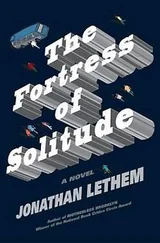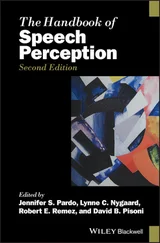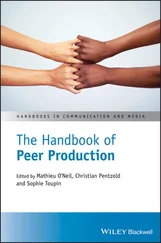29 Chavis, J.M. & Kisley, M.A. (2012). Adult attachment and motivated attention to social images: attachment‐based differences in event‐related brain potentials to emotional images. Journal of Research in Personality, 46, 55–62.
30 Chen, C., Hewitt, P.L., Flett, G.L., Cassels, T.G., Birch, S., & Blasberg, J.S. (2012). Insecure attachment, perfectionistic self‐presentation, and social disconnection in adolescents. Personality and Individual Differences, 52, 936–941.
31 Chow, C.M., Ruhl, H., & Buhrmester, D. (2016). Reciprocal associations between friendship attachment and relational experiences in adolescence. Journal of Social and Personal Relationships, 33, 122–146.
32 Collins, N.L., Ford, M.B., Guichard, A.C., & Allard, L.M. (2006). Working models of attachment and attribution processes in intimate relationships. Personality and Social Psychology Bulletin, 32, 201–219.
33 Coplan, R.J., Hipson, W.E., Archbell, K.A., Ooi, L.L., Baldwin, D., & Bowker, J.C. (2019). Seeking more solitude: conceptualization, assessment, and implications of aloneliness. Personality and Individual Differences, 148, 17–26.
34 Coplan, R.J., Ooi, L.L., & Nocita, G. (2015). When one is company and two is a crowd: why some children prefer solitude. Child Development Perspectives, 9, 133–137.
35 Coplan, R.J., Zelenski, J.M., & Bowker, J.C. (2018). Leave well enough alone? The costs and benefits of solitude. In J.E. Maddux (Ed.), Frontiers of Social Psychology. Subjective Well‐Being and Life Satisfaction (pp. 129–147). New York: Routledge.
36 Creasey, G. (2014). Conflict‐management behavior in dual trauma couples. Psychological Trauma: Theory, Research, Practice, and Policy, 6, 232–239.
37 Csikszentmihalyi, M. (1996). Creativity: Flow and the Psychology of Discovery and Invention. New York: Harper Collins.
38 Cupach, W.R. & Spitzberg, B.H. (2010). The Dark Side of Close Relationships II. New York: Routledge.
39 Danneel, S., Maes, M., Vanhalst, J., Bijttebier, P., & Goossens, L. (2018). Developmental change in loneliness and attitudes toward aloneness in adolescence. Journal of Youth and Adolescence, 47, 148–161.
40 Ernst, J.M. & Cacioppo, J.T. (1999). Lonely hearts: Psychological perspectives on loneliness. Applied and Preventive Psychology, 8, 1–22.
41 Fraley, R.C. & Marks, M.J. (2011). Pushing mom away: embodied cognition and avoidant attachment. Journal of Research in Personality, 45, 243–246.
42 Fraley, R.C. & Shaver, P.R. (2000). Adult romantic attachment: theoretical developments, emerging controversies, and unanswered questions. Review of General Psychology, 4, 132–154.
43 Fraley, R.C. & Shaver, P.R. (2016). Attachment, loss, and grief: Bowlby's views, new developments, and current controversies. In J. Cassidy & P.R. Shaver (Eds.), Handbook of Attachment: Theory, Research, and Clinical Applications (3rd edition, pp. 40–62). New York: Guilford Press.
44 Gal, I. (2019). Alone with a partner: The contribution of attachment orientations to the capacity to be alone in romantic relationships. Unpublished MA Thesis. Interdisciplinary Center (IDC) Herzliya, Herzliya, Israel.
45 Granot, D. & Mayseless, O. (2012). Representations of mother‐child attachment relationships and social‐information processing of peer relationships in early adolescence. The Journal of Early Adolescence, 32, 537–564.
46 Greenwood, D.N. & Long, C.R. (2011). Attachment, belongingness needs, and relationship status predict imagined intimacy with media figures. Communication Research, 38, 278–297.
47 Hayden, M.C., Müllauer, P.K., Andreas, S. (2017). A systematic review on the association between adult attachment and interpersonal problems. Journal of Psychology & Psychotherapy, 7, 1–9.
48 Hazan, C. & Shaver, P.R. (1987). Romantic love conceptualized as an attachment process. Journal of Personality and Social Psychology, 52, 511–524.
49 Heatley Tejada, A., Montero, M., & Dunbar, R. (2017). Being unempathic will make your loved ones feel lonelier: loneliness in an evolutionary perspective. Personality and Individual Differences, 116, 223–232.
50 Itzhaky, L., Stein, J.Y., Levin, Y., & Solomon, Z. (2017). Posttraumatic stress symptoms and marital adjustment among Israeli combat veterans: the role of loneliness and attachment. Psychological Trauma: Theory, Research, Practice, and Policy, 9, 655–662.
51 Juhl, J., Sand, E.C., & Routledge, C. (2012). The effects of nostalgia and avoidant attachment on relationship satisfaction and romantic motives. Journal of Social and Personal Relationships, 29, 2012, 661–670.
52 Kabat‐Zinn, J. (1994). Wherever You Go, There You Are: Mindfulness Meditation in Everyday Life. London, UK: Hachette Books.
53 Larose, S., Guay, F., & Boivin, M. (2002). Attachment, social support, and loneliness in young adulthood: a test of two models. Personality and Social Psychology Bulletin, 28, 684–693.
54 Larson, R.W. (1990). The solitary side of life: an examination of the time people spend alone from childhood to old age. Developmental Review, 10, 155–183.
55 Lavy, S., Mikulincer, M., & Shaver, P. R. (2013). Intrusiveness from an attachment theory perspective: a dyadic diary study. Personality and Individual Differences, 55, 972–977.
56 Long, C.R. & Averill, J.R. (2003). Solitude: an exploration of benefits of being alone. Journal for the Theory of Social Behavior, 33, 21–44.
57 Marcoen, A., Goossens, L., & Caes, P. (1987). Loneliness in pre‐ through late adolescence: exploring the contributions of a multidimensional approach. Journal of Youth and Adolescence, 16, 561–577.
58 McClure, M.J. & Lydon, J.E. (2014). Anxiety doesn’t become you: how attachment anxiety compromises relational opportunities. Journal of Personality and Social Psychology, 106, 89–111.
59 McClure, M.J., Lydon, J.E., Baccus, J.R., & Baldwin, M.W. (2010). A signal detection analysis of chronic attachment anxiety at speed dating: being unpopular is only the first part of the problem. Personality and Social Psychology Bulletin, 36, 1024–1036.
60 Mikulincer, M., & Shaver, P.R. (2003). The attachment behavioral system in adulthood: activation, psychodynamics, and interpersonal processes. In M.P. Zanna (Ed.), Advances in Experimental Social Psychology (Vol. 35, pp. 53–152). New York: Academic Press.
61 Mikulincer, M. & Shaver, P.R. (2016). Attachment Patterns in Adulthood: Structure, Dynamics, and Change (2nd edition). New York: Guilford Press.
62 Mikulincer, M., Shaver, P.R., Bar‐On, N., & Sahdra, B.K. (2014). Security enhancement, self‐esteem threat, and mental depletion affect provision of a safe haven and secure base to a romantic partner. Journal of Social and Personal Relationships, 31, 630–650.
63 Modell, A.H. (1993). The Private Self. Boston, MA: Harvard University Press.
64 Overall, N.C., Simpson, J.A., & Struthers, H. (2013). Buffering attachment‐related avoidance: softening emotional and behavioral defenses during conflict discussions. Journal of Personality and Social Psychology, 104, 854–871.
65 Peplau, L.A. & Perlman, D. (1982, Eds.) Loneliness: A Sourcebook of Current Theory, Research, and Therapy. New York: Wiley.
66 Pepping, C.A., MacDonald, G., & Davis, P.J. (2018). Toward a psychology of singlehood: an attachment‐theory perspective on long‐term singlehood. Current Directions in Psychological Science, 27, 324–331.
67 Pereira, M.G., Taysi, E., Orcan, F., & Fincham, F. (2014). Attachment, infidelity, and loneliness in college students involved in a romantic relationship: the role of relationship satisfaction, morbidity, and prayer for partner. Contemporary Family Therapy: An International Journal, 36, 333–350.
68 Ringstad, S. & Pepping, C. A. (2016, June). Attachment and long‐term singlehood. Poster presented at the 8th World Congress of Behavioral and Cognitive Therapies, Melbourne, Australia.
Читать дальше




![О Генри - Справочник Гименея [The Handbook of Hymen]](/books/407356/o-genri-spravochnik-gimeneya-the-handbook-of-hymen-thumb.webp)







